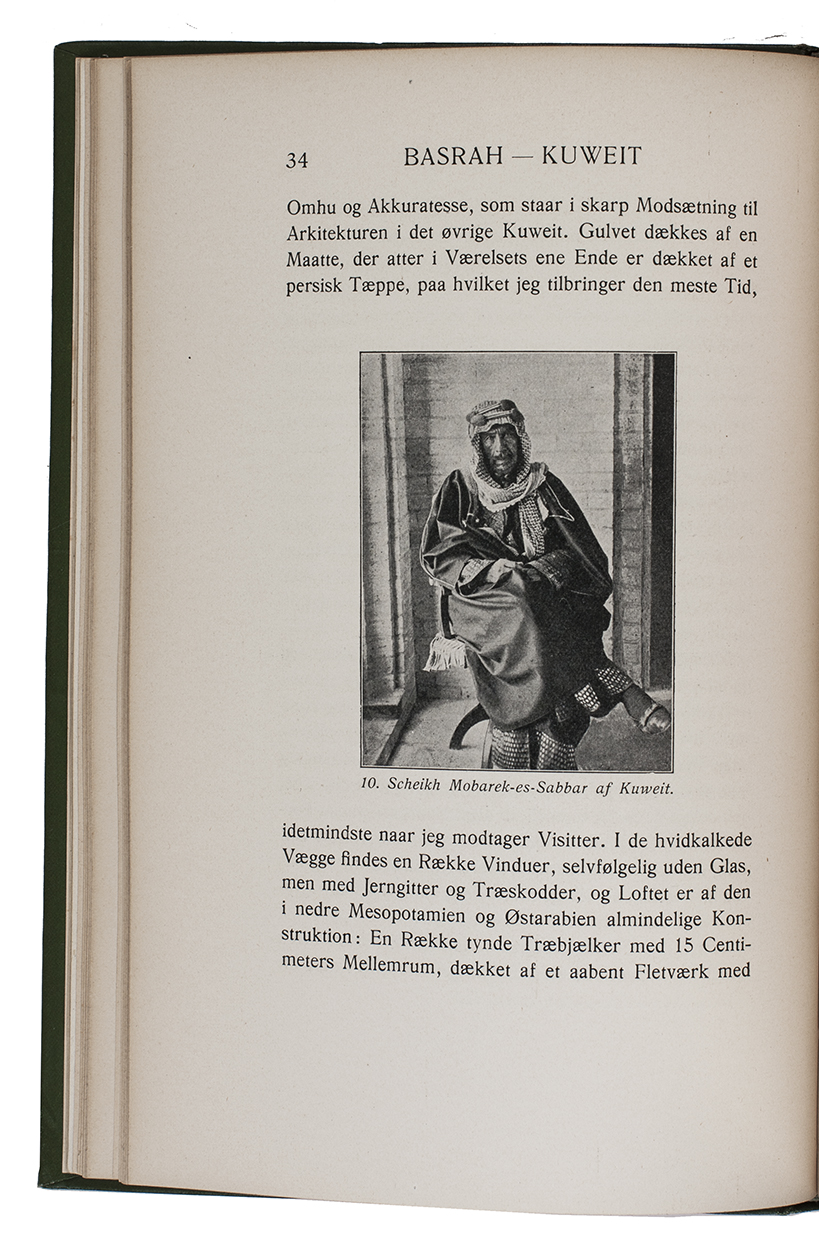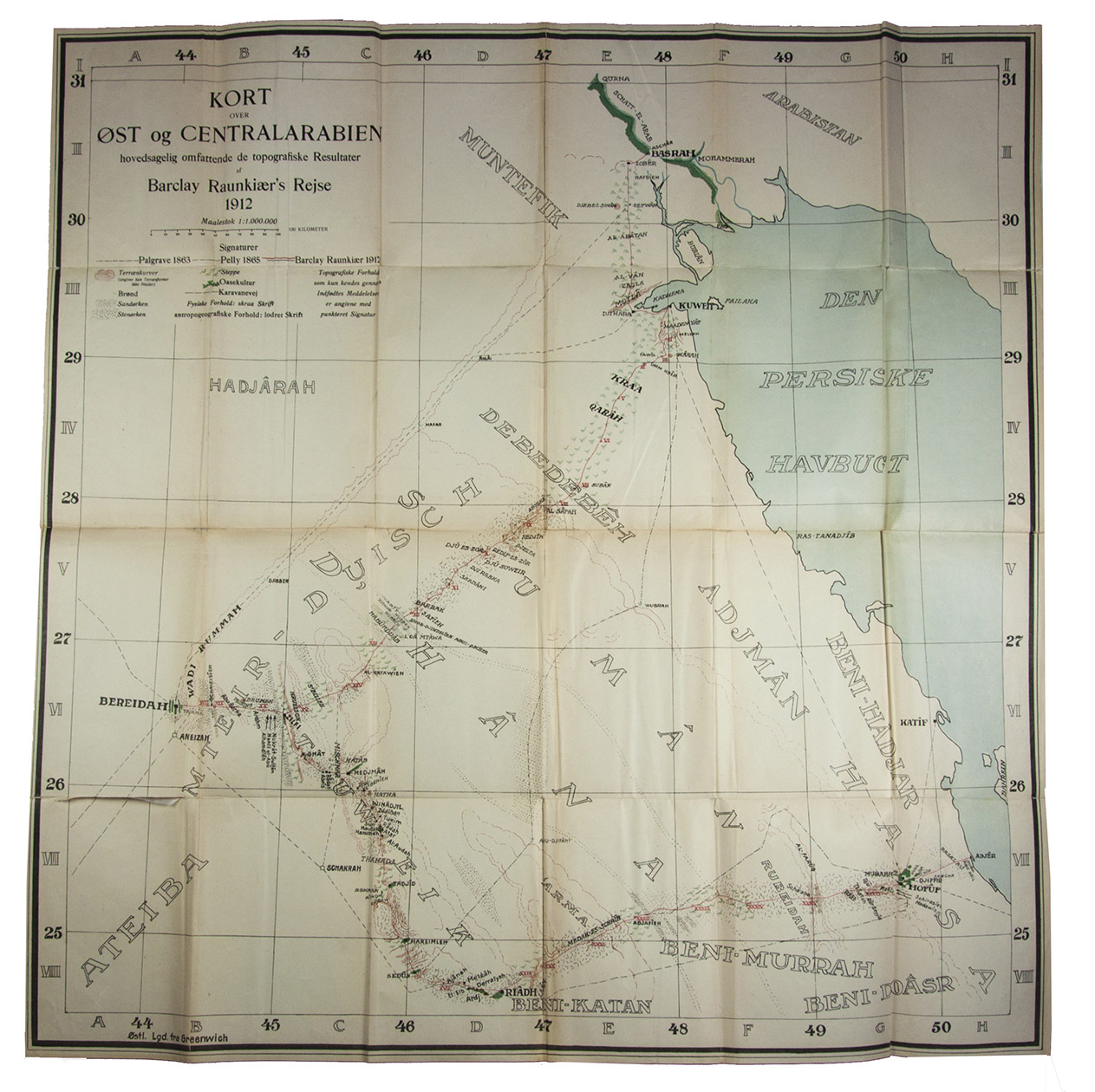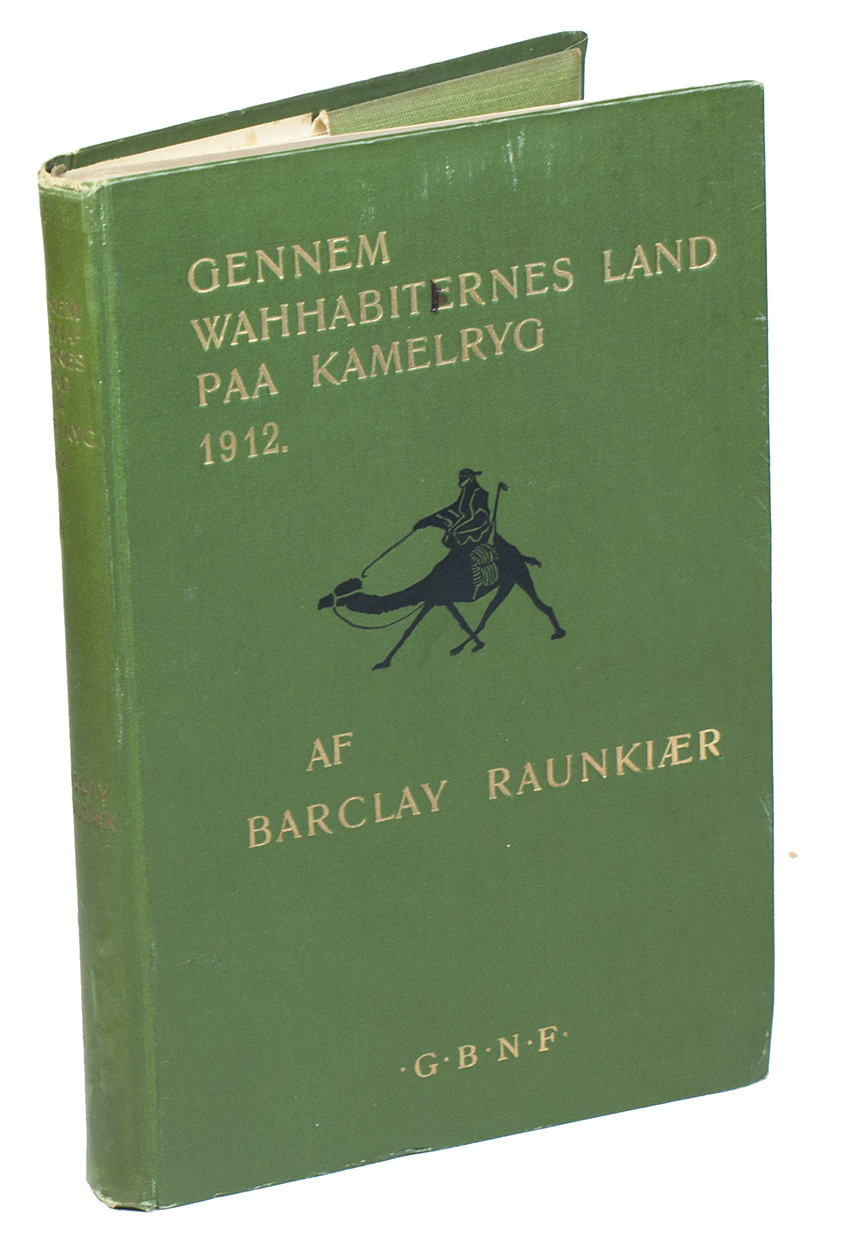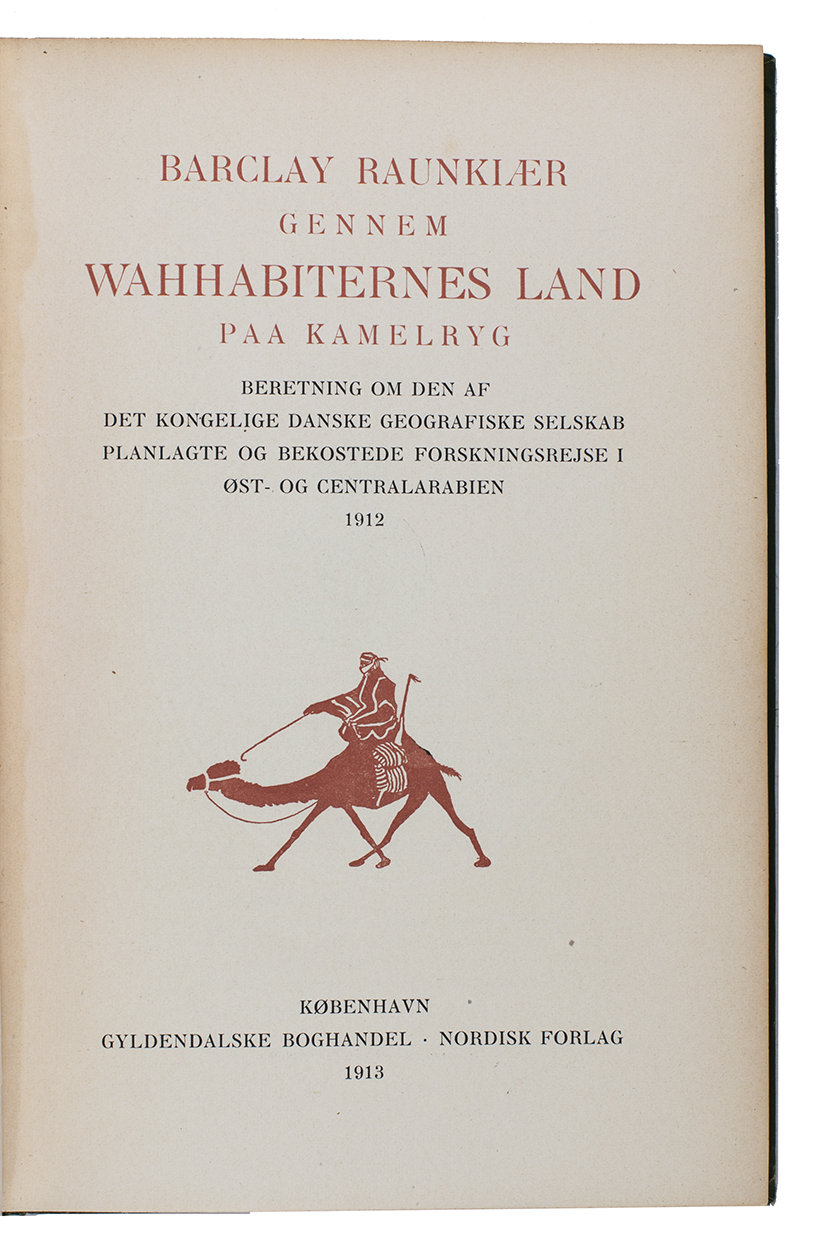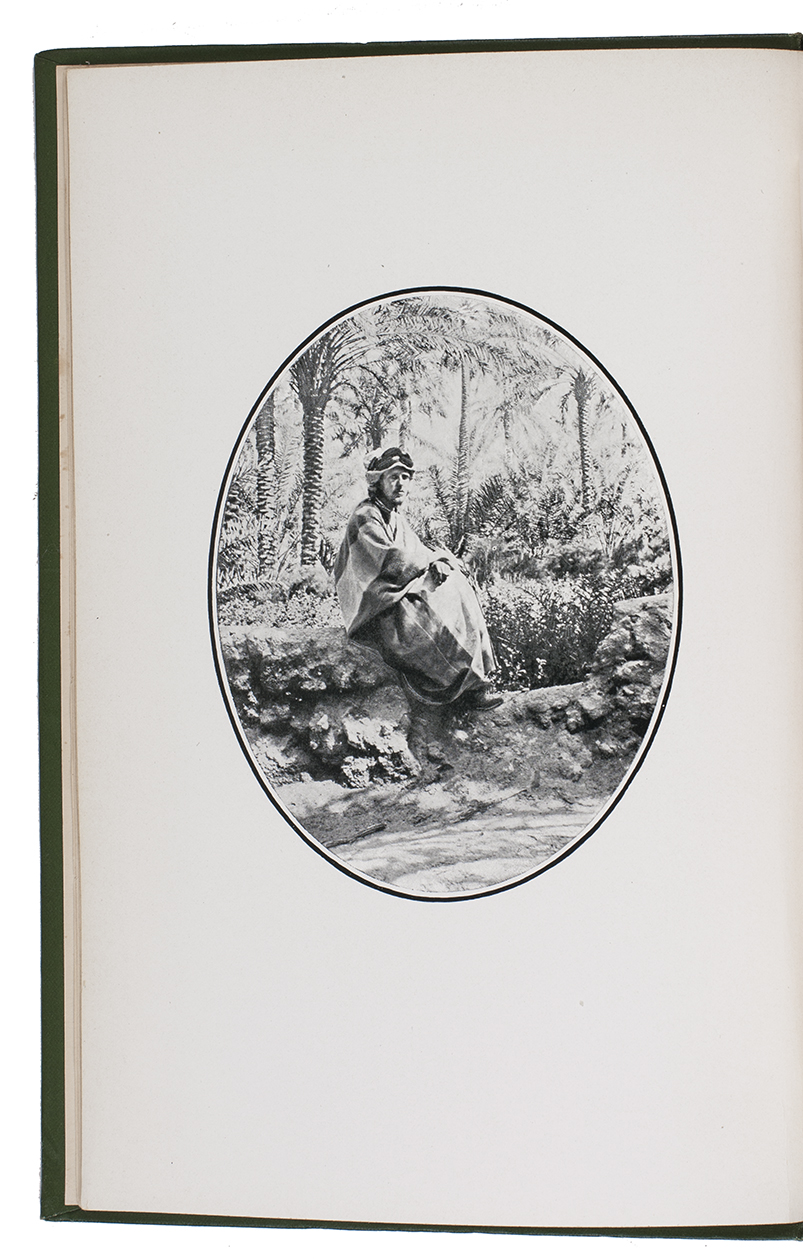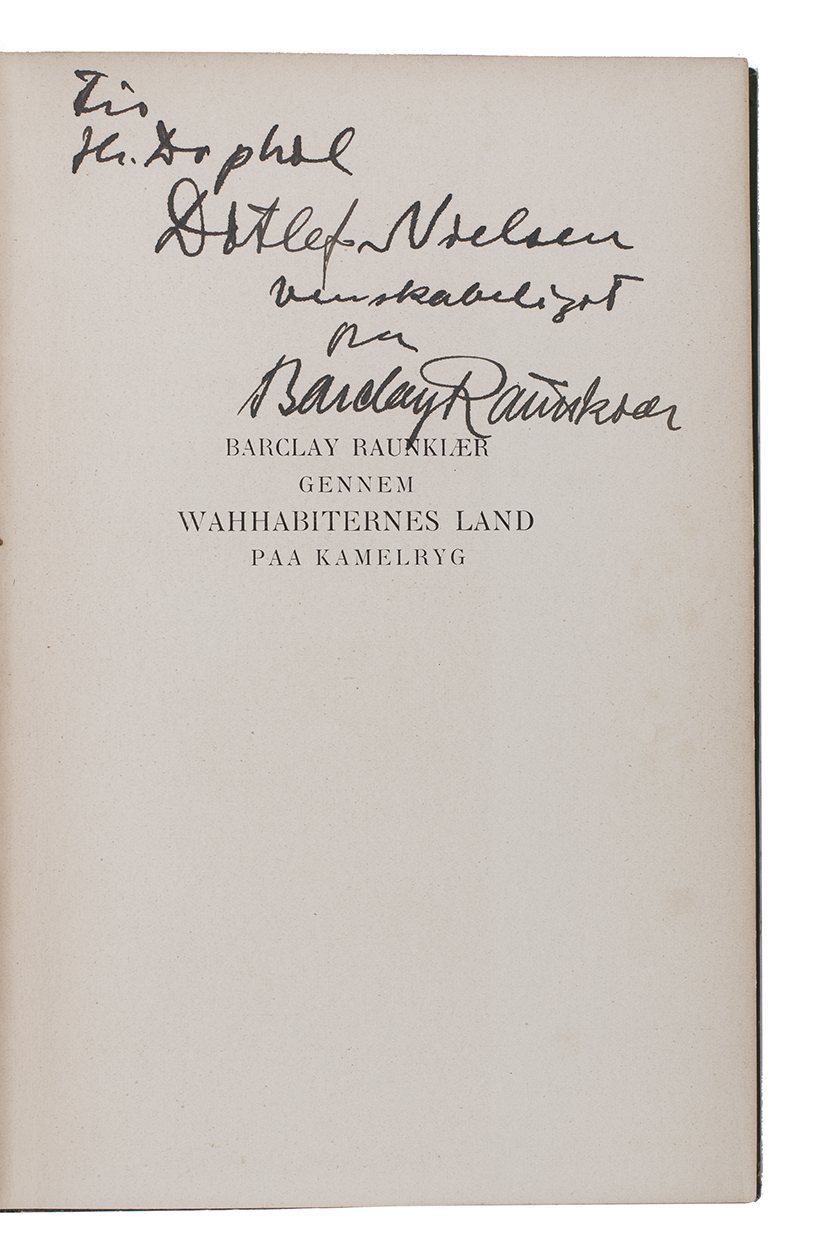RAUNKIAER, Barclay.
Gennem Wahhabiternes land paa kamelryg. Beretning om den af det Kongelige Danske Geografiske Selskab planlagte og bekosterde forskningsrejse i Ost- og Centralarabien 1912.
Copenhagen, Gyldendalske boghandel, Nordisk forlag, 1913. 8vo. With a frontispiece showing the author in Arab garb, 88 illustrations in text, most of them reproductions of drawings and photographs by the author, and a folding map loosely inserted in a pocket at the end. Publisher's green cloth. [1], [1 blank], [2], 304 pp.
€ 5,000
First and only edition, in the original Danish, of an account of a journey through the Arabian peninsula. Sponsored by the Royal Danish Geographical Society, Barclay Raunkiaer (1889-1915) set out to penetrate the hitherto unexplored deserts of south-east Arabia. Although he came equipped with a modest amount of scientific instruments and a camera, the use of these became almost impossible. The Arabs looked on foreigners with suspicion and Raunkiaer could use his camera only with great risk at certain unwatched moments (p. 12). At the beginning of 1912, he reached the town of Kuwait, where he stayed at the palace of Sheikh Mubarak. Since it was Mubarak's policy to keep Kuwait free of foreign interference, it took some active lobbying of the British envoy to convince the Kuwaitis that Raunkiaer was a harmless traveller. After that, it seems he enjoyed a certain amount of freedom, as numerous photographs testify, including one of pearl fishers and a portrait of Sheikh Mohammed. Raunkiaer was very impressed by the volume of trade in Kuwait, which he considered to be the most important trading centre on the east coast of Arabia.
In Kuwait, Raunkiaer became seriously ill, but his tuberculosis was undiagnosed. After a period of rest, he travelled further to Riyadh. As the first western traveller in the city in half a century, Raunkiaer was graciously received by Ibn Saud. After a short stay in Riyadh, Raunkiaer followed a caravan that consisted mostly of 150 pearl-fishers bound for Bahrain. During a stay in Hofuf, where the book ends, Raunkiaer's health became worse and he sailed to Bahrain to recuperate. From there he travelled back to Copenhagen via Bombay. After a few years working for the East Asiatic Company, Raunkiaer died from tuberculosis.
Shortly after the appearance of the Danish edition, the book was translated into German. T.E Lawrence, who considered it to be one of the "readable Arabian books", helped facilitate an English translation in 1916, privately printed by the Arab bureau in Cairo.
With a dedication by the author to the Danish historian of religion Ditlef Nielsen (1874-1949) and a few annotations in pencil in the final chapter. Binding slightly worn along the edges, with a small stain on the title. Endpapers foxed with the text browned; some small random pen marks at the lower margin of p. 47. The map with a few tears along the folds, most of them expertly repaired; a very good copy. Facey, Kuwait by the first photographers, pp. 50-51; "Danish expedition to Arabia", The geographical journal XLIV (1914), pp. 85-86.
Related Subjects:
